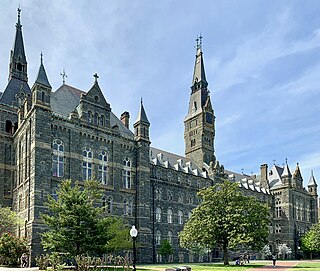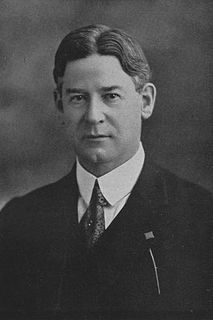
Clemson University is a public land-grant research university in Clemson, South Carolina. Founded in 1889, Clemson is the second-largest university in student population in South Carolina. For the fall 2019 semester, the university enrolled a total of 20,195 undergraduate students and 5,627 graduate students, and the student/faculty ratio was 18:1. Clemson's 1,400-acre campus is in the foothills of the Blue Ridge Mountains. The campus now borders Lake Hartwell, which was formed by the dam completed in 1962. The university manages the nearby 17,500-acre Clemson Experimental Forest that is used for research, education, and recreation.

Clemson is a city in Pickens and Anderson counties in the U.S. state of South Carolina. Clemson is home to Clemson University; in 2015, the Princeton Review cited the town of Clemson as ranking #1 in the United States for "town-and-gown" relations with its resident university. The population of the city was 13,905 at the 2010 census.

The College at Brockport, State University of New York is a public college in Brockport, New York. It is part of the State University of New York (SUNY).

Bridgewater State University is a public university with its main campus in Bridgewater, Massachusetts. It is the largest of nine state universities in Massachusetts. Including its off-campus sites in New Bedford, Attleboro, and Cape Cod, BSU has the fourth-largest campus of the 29 institutions in the Massachusetts Public Higher Education System. BSU's sports teams are called the Bears. School colors are crimson, white, and black.
Mississippi Delta Community College is a public community college serving the Mississippi Delta region with its main campus in Moorhead, Mississippi. It also offers courses at locations in Greenville, Greenwood, and Indianola. Its mascot is the Trojan warrior. It has an enrollment of 3,491 students.

Healy Hall is a National Historic Landmark and the flagship building of the main campus of Georgetown University in Washington, D.C. Constructed between 1877 and 1879, the hall was designed by Paul J. Pelz and John L. Smithmeyer, prominent architects who also built the Library of Congress. The structure was named after Patrick Francis Healy, who was the President of Georgetown University at the time.

Riggs Field is a 6,500-capacity soccer-specific stadium located in Clemson, South Carolina. The stadium is home to the Clemson Tigers men's and women's soccer teams. It has also hosted the NCAA Men's Soccer Championship in 1987. The stadium opened for soccer in 1980, and was renovated in 1987, and again in 2013. Previous to this, it hosted a variety of the school's athletic teams, including the football team from 1915 until 1941 and the baseball team from 1916 until 1969. It is named after Walter Riggs, the former coach of the football team and president of Clemson (1910–1924). Riggs Field is the fifth oldest collegiate athletic facility in the nation.

Walter Merritt Riggs was the president of Clemson University from 1910 to 1924 and the "father of Clemson football" coaching the first football team for what was then Clemson College. Riggs was president of Clemson during one of its most challenging times, during World War I, when enrollment dropped due to students joining the military or going home to help on family farms. Riggs graduated from the Agricultural and Mechanical College of Alabama with a Bachelor of Science in engineering in 1892 and was a member of Auburn's first football team. He was also president of his class, director of the glee club, and a member of Phi Delta Theta fraternity while at Auburn. Riggs was the second president of the Southern Intercollegiate Athletic Association, taking over for William Lofland Dudley in 1912.

Theodore Hesburgh Library is the primary building of the University of Notre Dame's library system. The present-day building opened on September 18, 1963, as Memorial Library. In 1987, it was renamed Hesburgh Library, in honor of Rev. Theodore Hesburgh, C.S.C., who served as the university's president from 1952 to 1987. The library's exterior façade that faces the university's football stadium includes a large, 134-foot (41 m) by 68-foot (21 m) mural called The Word of Life, or more commonly known as Touchdown Jesus. As of 2009, the library ranked as the 61st largest collection among research universities in the United States, with an estimated 3.39 million volumes.

The Clemson College Sheep Barn is a two-story barn built in 1915 on the Clemson University campus. It is the oldest surviving building associated with agriculture on this land-grant university. It was named to the National Register of Historic Places on January 4, 1990.

The Homewood Campus is the main academic and administrative center of the Johns Hopkins University. It is located at 3400 North Charles Street in Baltimore, Maryland. It houses the two major undergraduate schools: the Zanvyl Krieger School of Arts and Sciences and the Whiting School of Engineering.
Since the founding, Stanford University has provided on-campus housing for students. Today, all undergraduate students, most graduate students, and many graduate employees use campus housing. While not all graduate students are eligible for campus or subsidized off-campus housing, of those that are, only 64% are able to take advantage of this opportunity due to the limited housing stock. Student Housing at Stanford is currently part of Residential & Dining Enterprises, an in-house standalone vendor within the Stanford affiliated network of businesses.
The Campus of Clemson University was originally the site of U.S. Vice President John C. Calhoun's plantation, named Fort Hill. The plantation passed to his daughter, Anna, and son-in-law, Thomas Green Clemson. On Clemson's death in 1888, he willed the land to the state of South Carolina for the creation of a public university.

Clemson University opened in 1893 as an all-male military college. It was not until seventy years later in 1959 that the first fraternities and sororities arrived on campus. In the 1970s, they became recognized as national fraternities and sororities. The Greek life has now increased to 44 chapters on campus: fraternities and sororities from the National Panhellenic Conference, the North American Interfraternity Conference, the Multicultural Greek Council, and the National Pan-Hellenic Council.
Clemson House was a hotel and later a residence hall located on the campus of Clemson University in Clemson, South Carolina, USA. It was built in 1950 and demolished by controlled implosion in 2017.

James Patrick Clements is the 15th president of Clemson University in Clemson, South Carolina. He assumed office on December 31, 2013, after being president of West Virginia University for five years. Prior to his presidency, he was the provost and vice president of academic affairs for Towson University.

Tillman Hall is the most famous building on the Clemson University campus. The 3-story brick building with a clock tower is located on a hill overlooking Bowman Field. Tillman Hall is currently the home of the College of Education.

Charles Carroll Glover was an American banker and philanthropist who made major contributions to the modern landscape of Washington, D.C. in the late 19th and early 20th centuries. He was President of Riggs Bank, an effective advocate of urban beautification in Washington under the influence of the City Beautiful movement, and a generous donor of land and money for Washington's parks and monuments.

The English Building, previously known as the Woman's Building and Bevier Hall, is a historic structure on the campus of the University of Illinois Urbana-Champaign. It is located on the west side of the Main Quad between Lincoln Hall and the Henry Administration Building. The original portion of the English Building, designed by McKim, Mead & White, was completed in 1905 and subsequently expanded in 1913 and 1924. The distinctive columned front, which faces the Main Quad, dates to the 1913 addition. Since 1956, the English Building has been home to the university's Department of English.

















